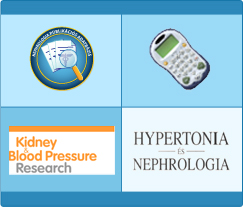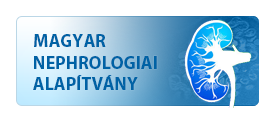Háttér: A szív- és érrendszeri megbetegedések okozta morbiditás és mortalitás csökkentésének érdekében kiemelt fontosságú a két major kockázati tényező, a hypertonia és a hyperlipidaemia egyidejű kombinált kezelése. Világszerte problémát jelent a kezeléshez fűződő rossz adherencia, amelynek javítására az egytablettás fix kombinációk potenciális megoldást nyújthatnak.
Célkitűzések: A 2022 szeptemberében indult és 2023 augusztusáig tartó TRIROX vizsgálat célja a rozuvasztatin, perindopril és indapamid fix kombinációs kezelés napi klinikai gyakorlatban történő alkalmazásának értékelése volt. Vizsgáltuk a vérnyomás- és koleszterin-célértéket elérők arányát a rozuvasztatin, perindopril és indapamid fix kombinációs terápia során háziorvosi praxisokban kezelt betegek körében. A primer és szekunder cardiovascularis prevencióban, illetve diabeteses
és nem diabeteses betegcsoportokban szerzett tapasztalatokat is összegeztük.
Betegek és módszerek: A többcentrumos, beavatkozással nem járó, prospektív, megfigyeléses vizsgálatban 74 háziorvos 914 hypertoniás és egyidejűleg hyperlipidaemiás beteget vont be, akiknél rozuvasztatin, perindopril és indapamid egytablettás fix kombinációjú (Roxiper®) kezelést indítottak. A betegek 90%-a primer, 10%-a pedig szekunder cardiovascularis prevenció miatti részesült kezelésben. Az érintett populáció 19,37%-a (177 fő) cukorbeteg volt. A vizsgálat két adatgyűjtési pontja a kiindulási és a 12 hetes kontrolladatokat foglalta magába. A statisztikai
elemzés leíró módszerekkel, McNemar-próbával és párosított t-próbával történt.
Eredmények: A bevont betegek átlagéletkora 62,5 ± 12,8 év volt. A 12 hetes kezelési
időszak alatt a rendelői mérések alapján a szisztolés vérnyomás 22,6 Hgmm-rel (14%), a diasztolés vérnyomás 9,8 Hgmm-rel (10%) csökkent. Az összkoleszterin szintje szignifikánsan 6,08 mmol/l-ről 4,45 mmol/l-re csökkent a kezelési periódus végére (19%). Az LDL-koleszterin szintje 0,86 mmol/l-rel mérséklődött (3,45-ról 2,59 mmol/l-re; 21%-kal), szintén csökkent a triglicerid értéke is 0,42 mmol/l-rel (2,08-ról 1,66 mmol/l-re). Az HDL-szint szignifikáns növekedése volt észlelhető a teljes betegpopulációban, az átlagos abszolút változás 0,1 mmol/l, relatív változás 11% volt. A betegek 98%-a végig kitartott a kezelés mellett.
Következtetések: Ez a való életet tükröző vizsgálat is azt bizonyítja, hogy a fix kombinációs rozuvasztatin, perindopril és indapamid hatékony és biztonságos kezelési módszert képvisel a cardiovascularis kockázat csökkentésére. A készítmény jó tolerálhatósága segíti a cardiovascularis prevenciós célok elérését, amely különösen fontos a nagy kockázatú diabeteses és szekunder prevencióban részesülő betegek esetében.
Background: In order to reduce cardiovascular morbidity and mortality the combined treatment of two major risk factors, hypertension and hyperlipidaemia, is of paramount importance. Poor adherence to treatment is a worldwide problem, to improve this, single-pill combinations (SPC) are a potential solution.
Objectives: The TRIROX study, which was performed between September 2022 and August 2023, aimed to evaluate the use of rosuvastatin, perindopril and indapamide single-pill combination therapy in daily clinical practice. We examined the proportion of patients achieving the target blood pressure and cholesterol range among patients treated by general practitioners. Experience gained in primary and secondary cardiovascular prevention, as well as in diabetic and nondiabetic patient groups was also summarized.
Patients and methods: In this multicentre, non-interventional, prospective, observational study, 74 general practitioners enrolled 914 patients with hypertension and hypercholesterolemia in whom rosuvastatin, perindopril and indapamide SPC (Roxiper®) was started. 90% of patients were treated for primary cardiovascular prevention and 10% for secondary cardiovascular prevention. 19.37% (177 patients) had diabetes. Two data collection points included baseline and 12-week
control data. Statistical analysis was performed using descriptive methods, the McNemar test and the paired t-test.
Results: The mean age of enrolled patients was 62.5 ± 12.8 years. During the 12- week treatment period, systolic blood pressure decreased by 22.6 mmHg (14%) and diastolic blood pressure by 9.8 mmHg (10%). Total cholesterol levels significantly decreased from 6.08 mmol/L to 4.45 mmol/L by the end of the treatment period (19%). LDL cholesterol decreased by 0.86 mmol/L (from 3.45 to 2.59 mmol/L; 21%) and triglycerides decreased by 0.42 mmol/L (from 2.08 to 1.66
mmol/L). A significant increase in HDL levels was observed in the overall patient population, with mean absolute change of 0.1 mmol/L and relative change of 11%. 98% of patients persisted with the treatment to the end of the study.
Conclusions: This real-life study demonstrates that SPC of rosuvastatin, perindopril and indapamide represents an effective and safe treatment for reducing cardiovascular risk. The good tolerability of the product helps to achieve cardiovascular prevention goals, which is esp












